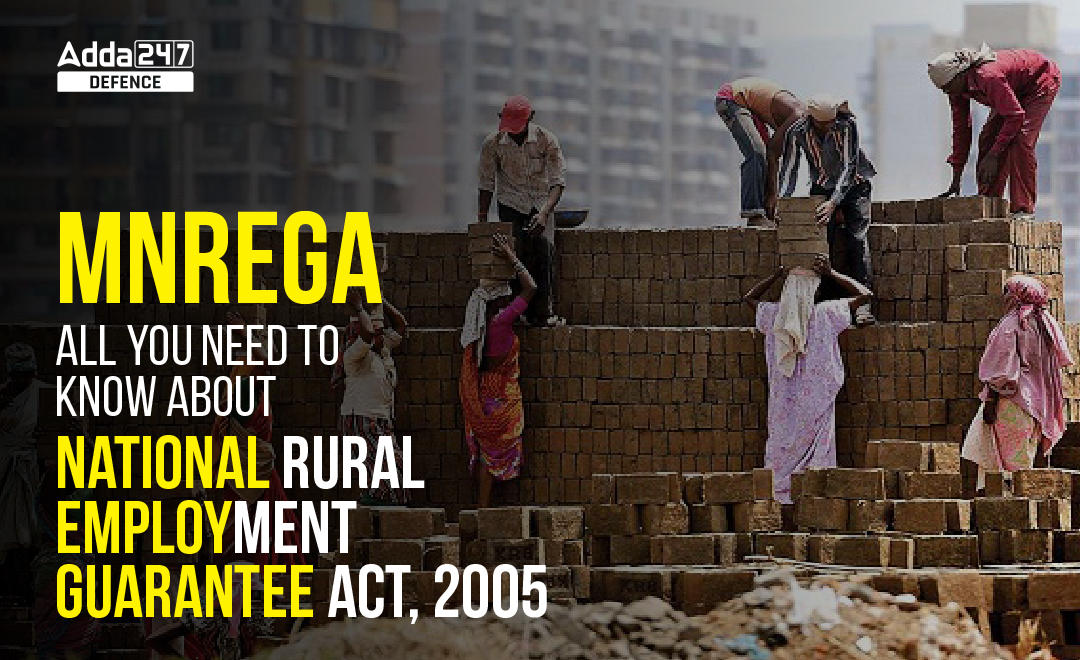MNREGA (मनरेगा)
The Union government has allocated Rs.72000 crores for The Mahatma Gandhi National Rural Employment Guarantee Act, (MGNREGA) scheme in 2021-22.
The Mahatma Gandhi National Rural Employment Guarantee Act, which is formerly known as the National Rural Employment Guarantee Act was introduced on 7th September 2005. The act is aimed at generating employees and social security in India. The act aims to cover all districts of India except the district which have a 100% urban population.
History of MGNREGA
In 1991, the P.V Narashima Rao government proposed a pilot scheme for generating employment in rural areas with the following goals:
- Employment Generation for agricultural labour during the free season.
- Infrastructure Development
- Enhanced Food Security
This scheme was called the Employment Assurance Scheme which later evolved into the MGNREGA after the merger with the Food for Work Programme in the early 2000s.
Objectives of MGNREGA
Objectives of Mahatma Gandhi National Rural Employment Guarantee Act (MGNREGA) are as follows:
- Providing 100 days of guaranteed wage employment to rural unskilled labour
- better economic security
- Reducing migration of labour from rural to urban areas
MGNREGA is different from earlier welfare schemes by taking a grassroots-driven approach to employment generation. The programs under the act are demand-driven and it also provide legal provisions to registered citizens, if there is some problem like work is not provided or payments are delayed.
The scheme is funded by the central government which bears the full cost of unskilled labour and 75% of the cost of material for works undertaken under this law. The central and state governments audit the works undertaken under this act through annual reports prepared by CEGC (Central Employment Guarantee Council) and the SEGC (State Employment Guarantee Councils). These reports have to be presented by the incumbent government in the legislature.
A few salient features of the scheme are:
- It gives authority to the Gram Panchayats for managing public works and bolstering Panchayati Raj Institutions. Gram Sabhas are free to accept or reject recommendations from Intermediate and District Panchayats.
- It incorporates accountability in its operational guidelines and ensures compliance and transparency at all levels.
Ever since the scheme was implemented, the number of jobs has increased by 240% in the last 10 years and 1xslots casino. The scheme has been successful in enhancing economic empowerment in rural India and helping overcome the exploitation of labour. The scheme has also diminished wage volatility and the gender pay gap in labour. This can be substantiated the by the following data available at the official site of MGNREGA:
- 14.88 crores MGNREGA job cards have been issued (Active Job Cards – 9.3 crores)
- 28.83 crores workers who gained employed under MGNREGA (2020-21) out of which active workers are 14.49 crores.
Challenges for MNREGA
- Lack of Finance
- Delay in Payment of wages
- Important Role of PRI
- Huge Number of Incomplete works
FAQs Related to MNREGA
Q1. When MGNREGA was launched?
Ans. Formerly it was known as NREGA when it was launched in the year 2005.
Q2. What is the aim of MGNREGA?
Ans. The act is aimed at generating employees and social security in India.


 IND–INDO CORPAT Exercise 2024
IND–INDO CORPAT Exercise 2024
 Major Dhyan Chand Khel Ratna Award Winne...
Major Dhyan Chand Khel Ratna Award Winne...
 Armed Forces Flag Day 2023: History and ...
Armed Forces Flag Day 2023: History and ...
